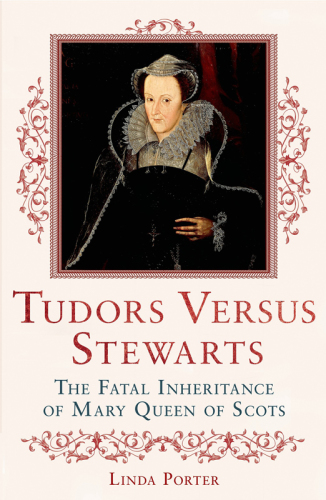
Tudors Versus Stewarts
The Fatal Inheritance of Mary, Queen of Scots
کتاب های مرتبط
- اطلاعات
- نقد و بررسی
- دیدگاه کاربران
نقد و بررسی

April 28, 2014
In this comprehensive account, British historian Porter (Crown of Thistles) reexamines the events that led to James VI of Scotland’s accession to the English throne in 1603 as James I. Much has been written already about the rivalry between his predecessor, Elizabeth I of England, and her cousin (James’s mother), Mary Queen of Scots, which culminated in Mary’s execution in 1587, and Porter avoids rehashing familiar tales about Elizabeth and Mary. Instead, she sets the rivalry between the two cousins in its familial context, with the focus on the earlier Stewarts, who have been overshadowed through the centuries by the more flamboyant Tudors. The relationship between the two dynasties had been fraught ever since Henry VII ascended to the English throne in 1485. There was the occasional reconciliation, such as the marriage between James IV of Scotland and Henry VII’s daughter, Margaret, in 1502, when the notion of a united Britain was seriously considered. Even Porter’s retelling of Mary’s life from birth until 1567, when she fled Scotland for England, provides fresh insights concerning that queen’s troubled reign and the causes behind her downfall, which, Porter argues, was not inevitable. Porter’s work relates the oft-neglected Scottish perspective and is recommended for anyone interested in Tudor England.

June 1, 2014
Porter (Katherine the Queen: The Remarkable Life of Katherine Parr, the Last Wife of Henry VIII, 2010) again draws from her exhaustive knowledge of 16th-century British history to explain the strong ties that eventually united Scotland and England.The squabble between Mary Queen of Scots and Queen Elizabeth had deep roots and a long history. Beginning with the ascent of Henry VII in 1485 and the start of the Tudor dynasty, the author explains the many threats against his reign, including imposters, uprisings and constant border skirmishes. In the most important royal marriage of the century, Henry sent his daughter, Margaret, to marry the future James IV, the first step toward union. Margaret was second in line to the English throne, after her brother, Henry VIII, who also wished to impair the "Auld Alliance between France and Scotland." Porter clearly shows the ways in which Scotland was used by the English and French against each other, always at the expense of the Scots. James died at Flodden in 1513 in a diversionary attack intended to draw the English away from their attack on France. By that time, Henry VIII reigned and was bent on recovering England's territories in France. Regents ruled for James V until he wed Mary of Guise in 1538. That union produced Mary Queen of Scots, widowed Dauphine of France who, at age 24, was a deposed queen facing 19 years of imprisonment. Her son united Scotland and England in 1603.A wonderfully thorough history of the Scots that thankfully avoids dwelling on stories that have been explored countless times before-especially fitting now as Scotland decides whether to withdraw from the union with England.
COPYRIGHT(2014) Kirkus Reviews, ALL RIGHTS RESERVED.

June 1, 2014
Members of England's Tudor dynasty have been the subjects of books, films, TV series, and more. Their contemporaries, Scotland's Stewarts, remain largely in the background until Mary, Queen of Scots, emerges from the shadows to bedevil Elizabeth I. Author Porter (Katherine the Queen: The Remarkable Life of Katherine Parr, the Last Wife of Henry VIII, 2010) interweaves the stories of both dynasties to show how the history of Great Britain was shaped by their uneasy relations. She begins with the struggles that brought crowns to both Henry VII of England and James IV of Scotland, whom she calls one of Britain's greatest kings. James' marriage to Henry's daughter Margaret united the families but also intensified their rivalries, since it gave the Stewarts a claim to the English throne. The rivalries were carried into the next generations, particularly in the conflicts between Henry VIII and his nephew James V, ending only when Mary's son, James VI, was crowned as England's James I. Porter's highly readable account offers a fresh perspective for readers who look forward to each new book on the Tudors.(Reprinted with permission of Booklist, copyright 2014, American Library Association.)

























دیدگاه کاربران